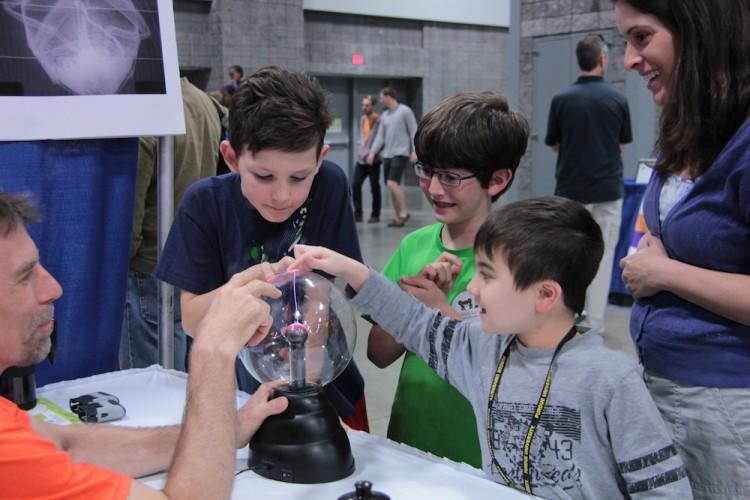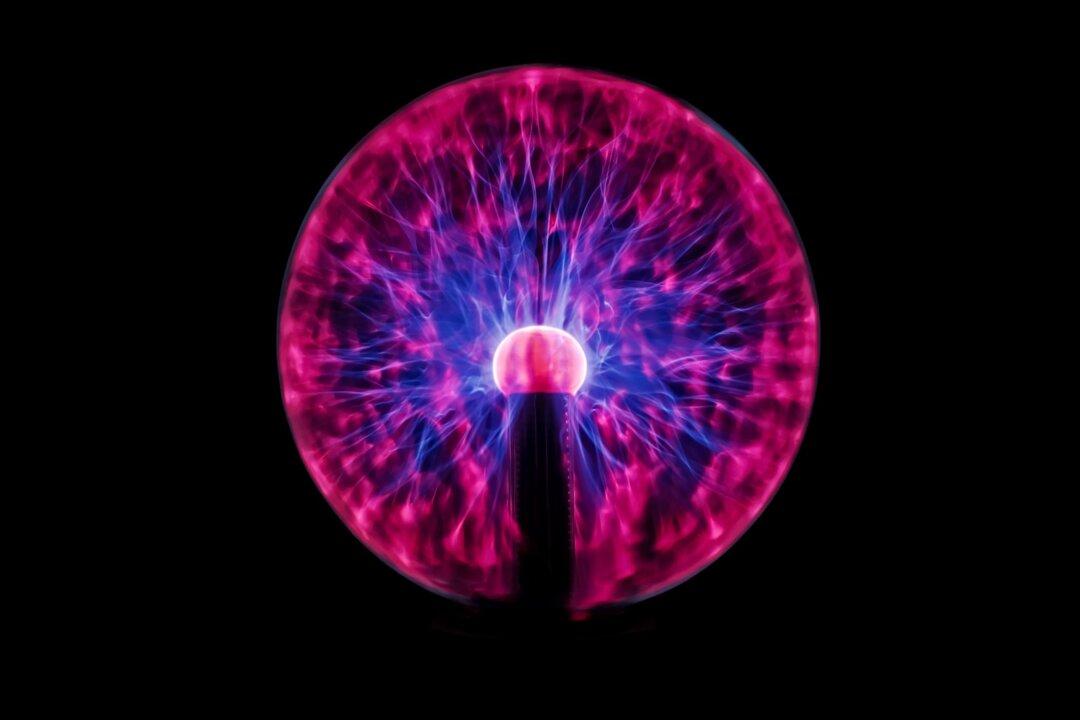
When touched, the strings of light concentrate onto the spot where your hand is. Stephanie Lam/The Epoch Times
The plasma globe (or inert gas discharge tube) is a strange object that appears to trap colorful strings of light constantly moving inside a transparent ball.




